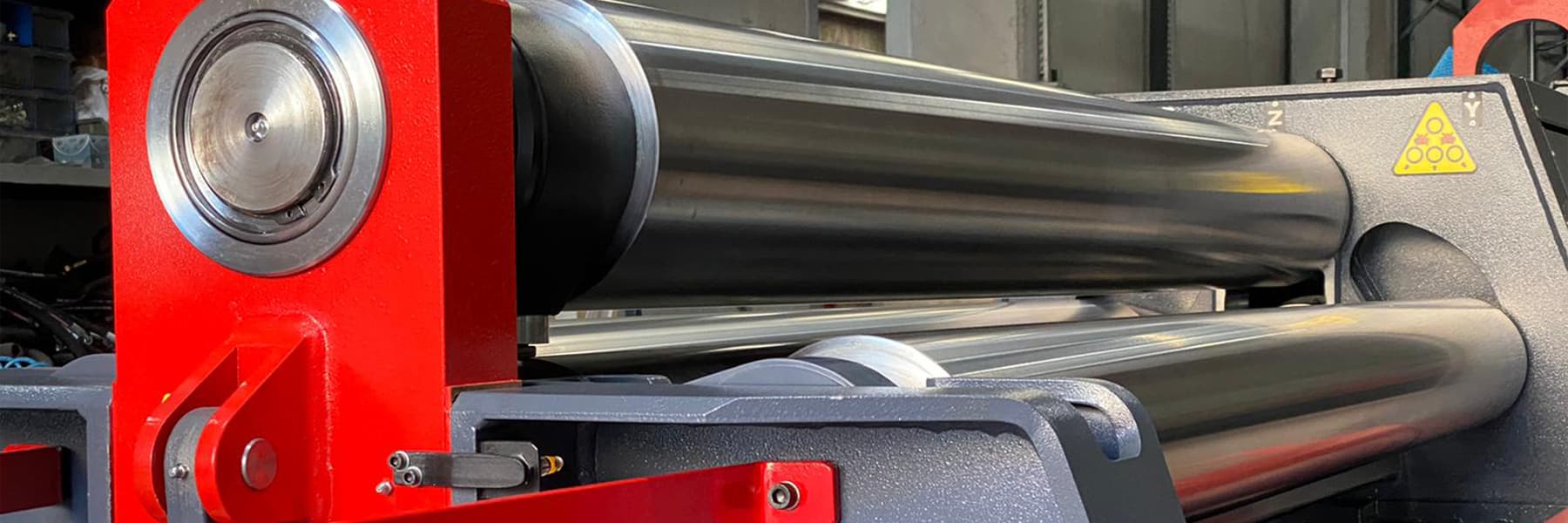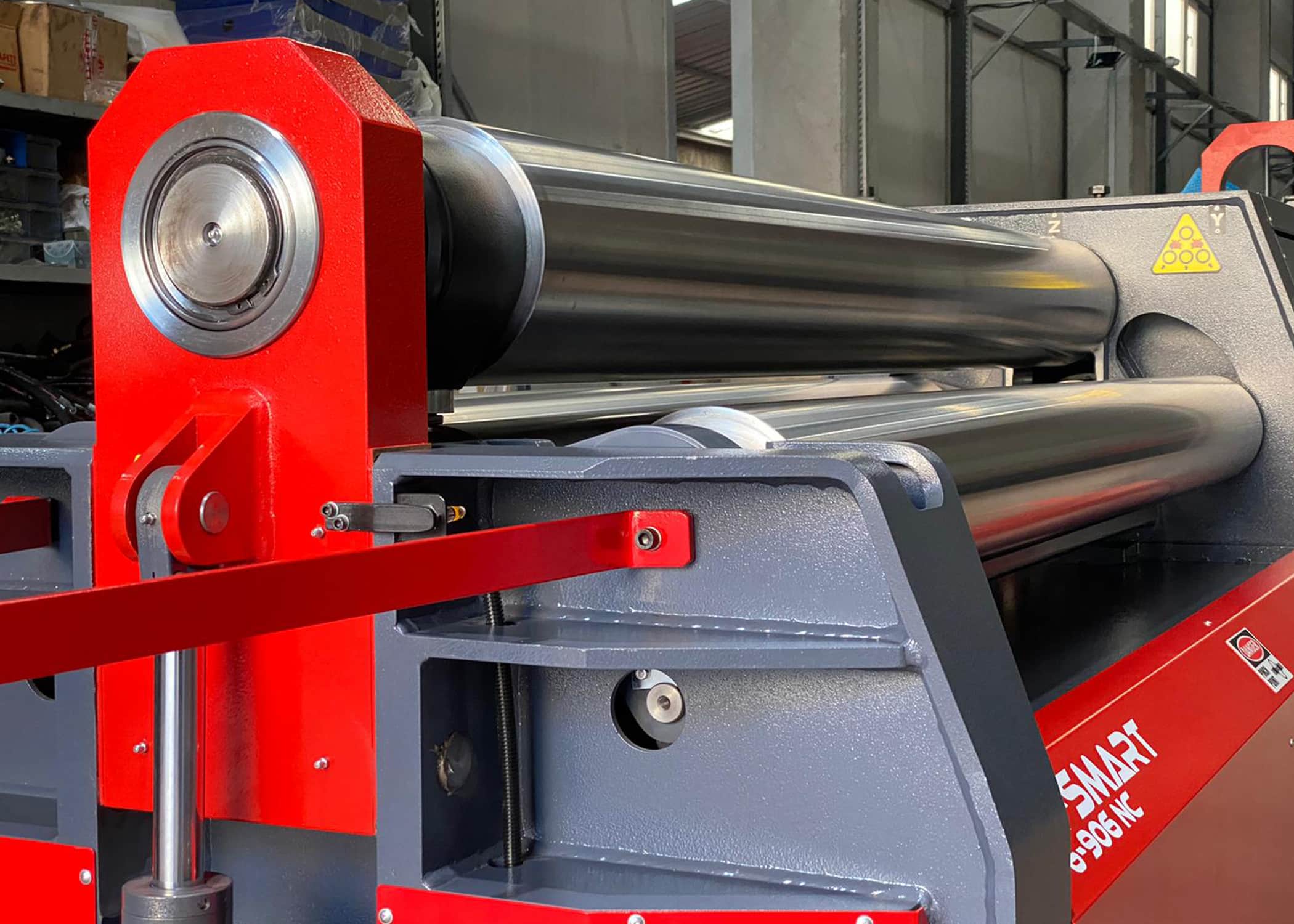Compiling the Rules of the Roll
It is incumbent on every metal fabricator (including plate roll operators) to create and continually update a list of guidelines, tips, tricks, safe shortcuts, and rules about each type of metalworking process and operation that they perform. While some will be general for any model of a certain type of machine, others will be exclusive for specific machines in the operator’s own shop. In addition, there will be setup procedures and operational strategies that should be recorded for certain unique jobs, especially those for repeat customers.
Metalworking is an art, and a serious fabricator will treat it as such, learning and wielding the skills that will create a near-perfect part each time. When a press brake operator is consistently building and referring to a “rules of the road” list they personally have assembled, their ability to reliably perform whatever bend is needed to achieve a correct angle in any type of metal is greatly increased.
A plate roll operator likewise needs to maintain such a list—a “rules of the roll,” as it were—to ensure the proper radius is attained in any job that comes their way. Guidelines for better rolling can be picked up in a variety of ways: being tutored by an expert roll operator; studying books and videos on rolling procedures; and just plain trial and error.
There is much to learn (and practice) throughout the process of becoming a truly skilled plate roll operator, such as understanding the ways in which different metals behave under stress, or the mathematics involved in a rolling job, or the practices necessary to prevent a rolling operation from failing. As a metalworker learns and grows in these various arenas of knowledge, he or she will transform from a mere machine operator into a true artisan of metal.
While the field of plate rolling techniques is a wide one, below are a few possible starting points.
The Art of Becoming an Armchair Metallurgist
A fabricator doesn’t need to seek a bachelor’s degree in engineering or materials science followed by graduate studies to gain a working knowledge of rudimentary metallurgy—all it takes is a passion for metals and a willingness to study. Understanding the basic properties of all the metals that will potentially be used at a shop will greatly benefit a metalworker who will have to cut, roll, bend, or otherwise fabricate them.
For example, knowing the direction a blank’s grain structure runs is an important aspect of loading the job, since the bend needs to be perpendicular to it to minimize the chance of the material fracturing. The metal’s hardness, yield strength, ductility, elasticity, and other physical factors all affect rolling and other fabrication processes. The more education a fabricator has about how a particular piece of metal will react during an operation, the better prepared he or she is for either avoiding or quickly correcting problems.
But I Didn’t Pay Attention in Math Class
There’s no getting around it—expert fabricators need to understand math. While the advent of CNC machines has greatly simplified metal forming processes, there is no substitute for a metalworker being truly adept at his or her craft. Tales abound in the industry of a job being saved from ruin by a knowledgeable fabricator spotting an error that was entered into a program by mistake.
In plate rolling operations, indispensable math skills run from the elementary to the complex. Some examples include:
- The minimum internal diameter of a part that can be rolled or pre-bent is based on a multiple of the diameter of the top roll of the machine in question and varies according to the thickness of the workpiece.
- In procuring the correct blank to create a cylinder, the ability to calculate the centerline arc of the rolled part is necessary (subtracting the thickness of the material from the outside diameter of the cylinder), then multiplying that number by pi (3.1416) to give the length of the needed plate.
- Roll bending a plate into a conical surface requires understanding the different radii along the length of the finished cone, along with other factors, such as the angle of the axis of the upper roll in relation to the axes of the side rolls at each step of the operation.
Forming a Familiarity with Deformation
It sounds simple enough: put a flat sheet of metal into a plate rolling machine; run it around a few times; out comes a perfect cylinder of metal. The theory, however, is generally quite far from the actual practice. Not only are there flat spots at the leading and tailing ends of the sheet that must be dealt with—usually through a pre-bending process prior to the actual rolling cycle—but the center of the sheet will always be rolled to a slightly larger diameter than the outside edges, causing deformation of the finished workpiece.
A plate roll operator needs to understand the concept of deflection—the cause of such deformation—and know how to compensate for it during a rolling operation. Some methods can include the use of a crowning mechanism built into the machine to support the center of the bottom rolls, the substitution of a different top roll with greater crowning built into it, adding shims, increasing the number of passes, or reducing the speed or pressure of the rolls. The skilled fabricator will become familiar with different techniques and know when best to apply them to keep finished parts within tolerance.
Plate Rolling Tribal Knowledge
Think about when you first learned that a quick and effective way to check the radius of a rolled part—while it’s still on the plate roll—was by using a precut template you could hold against the inside diameter. While such knowledge might have been gained from an article like this one or through an instructional video, it is much more likely that the trick was taught to you by a mentor, either on the job or in a class.
The best learning will always take place in the presence of experts who are willing to impart what they know while answering any questions that arise during the instruction. Likewise, as you gain skills and knowledge, be ready to share it with others at your workplace and elsewhere in the coming months and years.
As fabricators share the various techniques that they’ve learned to make jobs easier, safer, and of better quality, they are increasing the tribal knowledge within their organization—and likely also within the local industry—that will hopefully be passed down through many generations of future metalworkers.







